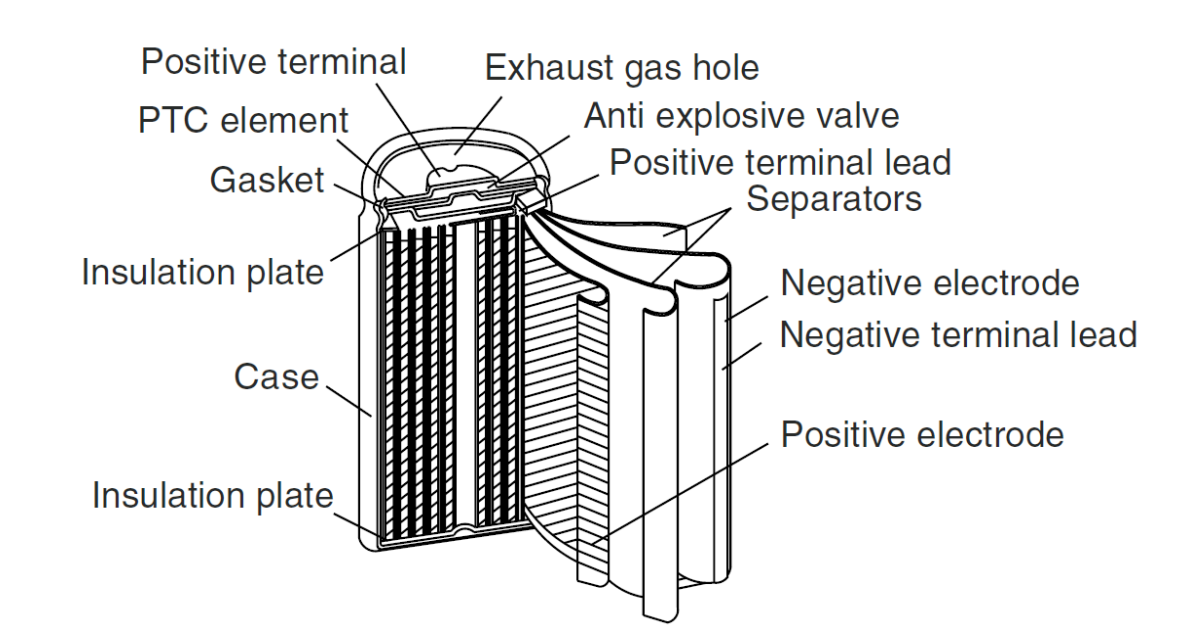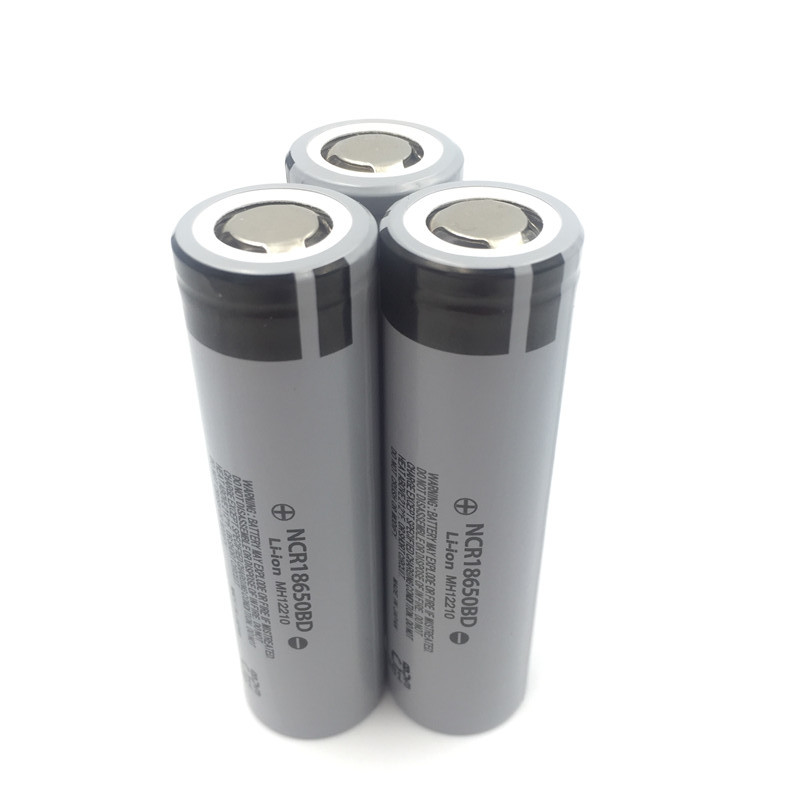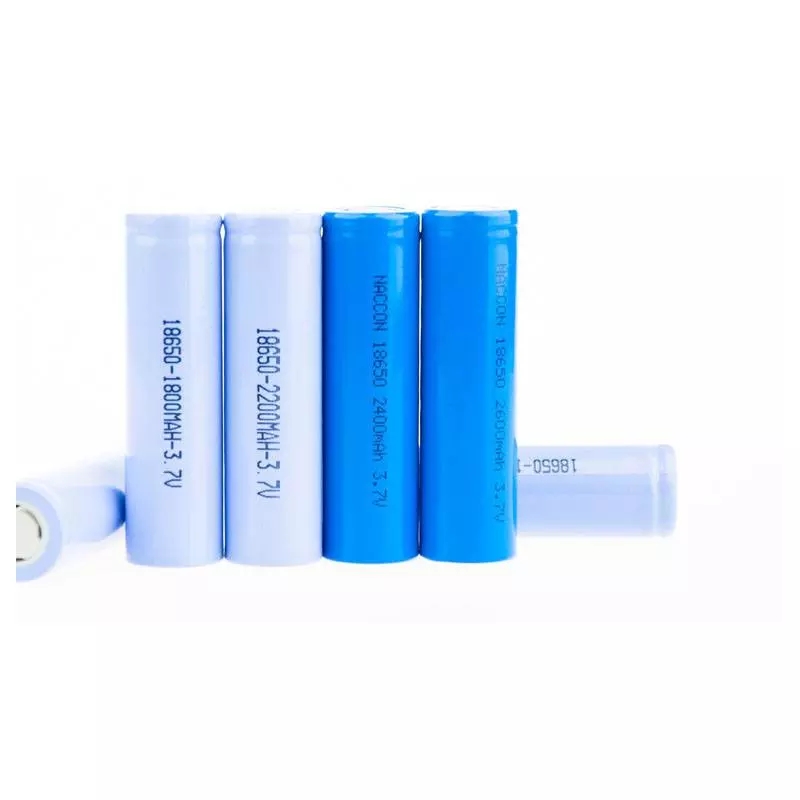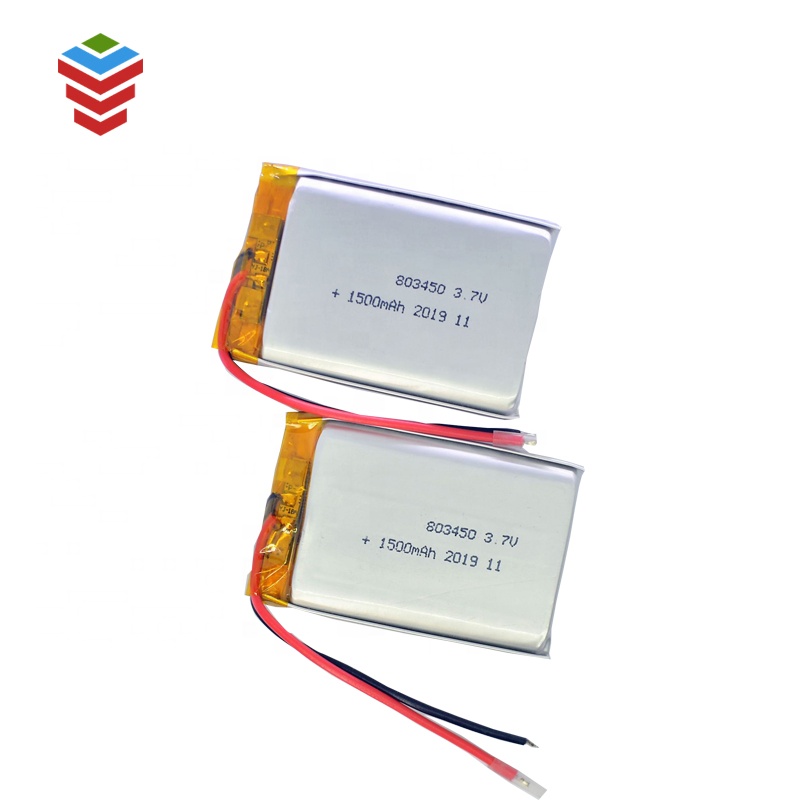1. What is a cylindrical lithium battery?
1). Definition of cylindrical battery
Cylindrical lithium batteries are divided into different systems of lithium iron phosphate, lithium cobalt oxide, lithium manganate, cobalt-manganese hybrid, and ternary materials. The outer shell is divided into two types: steel shell and polymer. Different material systems have different advantages. At present, the cylinders are mainly steel-shell cylindrical lithium iron phosphate batteries, which are characterized by high capacity, high output voltage, good charge and discharge cycle performance, stable output voltage, large current discharge, stable electrochemical performance, and use Safe, wide operating temperature range, and environmentally friendly, it is widely used in solar lamps, lawn lamps, back-up energy, power tools, toy models.
2). Cylindrical battery structure
The structure of a typical cylindrical battery includes: shell, cap, positive electrode, negative electrode, separator, electrolyte, PTC element, gasket, safety valve, etc. Generally, the battery case is the negative electrode of the battery, the cap is the positive electrode of the battery, and the battery case is made of nickel-plated steel plate.
3). The advantages of cylindrical lithium batteries
Compared with soft packs and square lithium batteries, cylindrical lithium batteries have the longest development time, higher standardization, more mature technology, high yield and low cost.
· Mature production technology, low PACK cost, high battery product yield, and good heat dissipation performance
· Cylindrical batteries have formed a series of internationally unified standard specifications and models with mature technology and suitable for continuous mass production.
· The cylinder has a large specific surface area and a good heat dissipation effect.
· Cylindrical batteries are generally sealed batteries, and there are no maintenance problems during use.
· The battery shell has high withstand voltage, and there will be no phenomena such as square, flexible packaging battery expansion during use.
4). Cylindrical battery cathode material
At present, the mainstream commercial cylindrical battery cathode materials mainly include lithium cobalt oxide (LiCoO2), lithium manganese oxide (LiMn2O4), ternary (NMC), lithium iron phosphate (LiFePO4), etc. The batteries with different material systems have different The characteristics are as follows:
| Term | LCO(LiCoO2) | NMC(LiNiCoMnO2) | LMO(LiMn2O4) | LFP(LiFePO4) |
| Tap density(g/cm3) | 2.8~3.0 | 2.0~2.3 | 2.2~2.4 | 1.0~1.4 |
| Specific surface area(m2/g) | 0.4~0.6 | 0.2~0.4 | 0.4~0.8 | 12~20 |
| Gram capacity(mAh/g) | 135~140 | 140~180 | 90~100 | 130~140 |
| Voltage platform(V) | 3.7 | 3.5 | 3.8 | 3.2 |
| Cycle performance | 500 | 500 | 300 | 2000 |
| Transition metal | lacking | lacking | rich | very rich |
| Raw material costs | very high | high | low | low |
| Environmental protection | Co | Co,Ni | eco | eco |
| Safety performance | bad | good | very good | excellent |
| Application | Small and medium battery | Small battery/small power battery | Power battery, low-cost battery | Power battery/large capacity power supply |
| Advantage | Stable charge and discharge, simple production process | Stable electrochemical performance and good cycle performance | Rich manganese resources, low price, good safety performance | High safety, environmental protection, long life |
| Disadvantage | Cobalt is expensive and has a low cycle life | Cobalt is expensive | Low energy density, poor electrolyte compatibility | Poor low temperature performance, low discharge voltage |
5). Anode material for cylindrical battery
Cylindrical battery anode materials are roughly divided into six types: carbon anode materials, alloy anode materials, tin-based anode materials, lithium-containing transition metal nitride anode materials, nano-level materials, and nano-anode materials.
· Carbon nanoscale material anode materials: The anode materials that have been actually used in lithium-ion batteries are basically carbon materials, such as artificial graphite, natural graphite, mesophase carbon microspheres, petroleum coke, carbon fiber, pyrolytic resin carbon, etc. .
· Alloy anode materials: including tin-based alloys, silicon-based alloys, germanium-based alloys, aluminum-based alloys, antimony-based alloys, magnesium-based alloys and other alloys. There are currently no commercial products.
· Tin-based anode materials: Tin-based anode materials can be divided into tin oxides and tin-based composite oxides. Oxide refers to the oxide of tin metal in various valence states. There are currently no commercial products.
· There are no commercial products for lithium-containing transition metal nitride anode materials.
· Nano-scale materials: carbon nanotubes, nano-alloy materials.
· Nano anode material: nano oxide material
2. Cylindrical lithium battery cells
1). Brand of cylindrical lithium ion batteries
Cylindrical lithium batteries are more popular among lithium battery companies in Japan and South Korea. There are also large-scale enterprises in China that produce cylindrical lithium batteries. The earliest cylindrical lithium battery was invented in 1992 by Sony Corporation of Japan.
Well-known cylindrical lithium-ion battery brands: Sony, Panasonic, Sanyo, Samsung, LG, BAK, Lishen, etc.
2). Types of cylindrical lithium ion batteries
Cylindrical lithium-ion batteries are usually represented by five digits. Counting from the left, the first and second digits refer to the diameter of the battery, the third and fourth digits refer to the height of the battery, and the fifth digit denotes the circle. There are many types of cylindrical lithium batteries, the more common ones are 10400, 14500, 16340, 18650, 21700, 26650, 32650, etc.
①10440 battery
The 10440 battery is a lithium battery with a diameter of 10mm and a height of 44mm. It is the same size as what we often call the “No. 7 battery”. The battery capacity is generally small, only a few hundred mAh. It is mainly used in mini electronic products. Such as flashlights, mini speakers, loudspeakers, etc.
②14500 battery
The 14500 battery is a lithium battery with a diameter of 14mm and a height of 50mm. This battery is generally 3.7V or 3.2V. The nominal capacity is relatively small, a little larger than the 10440 battery. It is generally 1600mAh, with superior discharge performance and the most application field Mainly consumer electronics, such as wireless audio, electric toys, digital cameras, etc.
③16340 battery
The 16340 battery is a lithium battery with a diameter of 16mm and a height of 34mm. This battery is used in strong light flashlights, LED flashlights, headlights, laser lights, lighting fixtures, etc. Often appear.
④18650 battery
The 18650 battery is a lithium battery with a diameter of 18mm and a height of 65mm. Its biggest feature is that it has a very high energy density, almost reaching 170 Wh/kg. Therefore, this battery is a relatively cost-effective battery. We usually Most of the batteries I see are this kind of batteries, because they are relatively mature lithium batteries, with good system quality and stability in all aspects, and are widely used in applications with battery capacities of about 10 kWh, such as in mobile phones, laptops and other small appliances .
⑤ 21700 battery
The 21700 battery is a lithium battery with a diameter of 21mm and a height of 70mm. Because of its increased volume and space utilization, the energy density of the battery cell and the system can be improved, and its volumetric energy density is much higher than 18650 Type batteries are widely used in digital, electric vehicles, balance vehicles, solar energy lithium battery street lights, LED lights, power tools, etc.
⑥ 26650 battery
The 26650 battery is a lithium battery with a diameter of 26mm and a height of 65mm. It has a nominal voltage of 3.2V and a nominal capacity of 3200mAh. This battery has excellent capacity and high consistency and has gradually become a trend to replace the 18650 battery. Many products in power batteries will gradually favor this.
⑦ 32650 battery
The 32650 battery is a lithium battery with a diameter of 32mm and a height of 65mm. This battery has a strong continuous discharge capacity, so it is more suitable for electric toys, backup power supplies, UPS batteries, wind power generation systems, and wind and solar hybrid power generation systems.
3. the development of cylindrical lithium battery market
The technological progress of cylindrical lithium-ion batteries mainly comes from the development of innovative research and application of key battery materials. The development of new materials will further improve battery performance, improve quality, reduce costs, and improve safety. In order to meet the requirements of downstream applications for increasing battery specific energy, on the one hand, materials with high specific capacity can be used, and on the other hand, high-voltage materials can be used by increasing the charging voltage.
Cylindrical lithium-ion batteries developed from 14500 to Tesla 21700 batteries. In the near and mid-term development, while optimizing the existing system of lithium-ion power battery technology to meet the large-scale development needs of new energy vehicles, to develop new lithium-ion power batteries To focus on improving key technologies such as safety, consistency, and longevity, and to simultaneously carry out forward-looking research and development of new system power batteries.
For the mid- to long-term development of cylindrical lithium-ion batteries, while continuing to optimize and upgrade new lithium-ion power batteries, focus on research and development of new system power batteries, which significantly increase specific energy and reduce costs, so as to realize the practical and large-scale power batteries of the new system application.
4. the comparison of cylindrical lithium battery and square lithium battery
1). Battery shape: The square size can be designed arbitrarily, but the cylindrical battery cannot be compared.
2). Rate characteristics: the process limitation of the cylindrical battery welding multi-terminal ear, the rate characteristic is slightly worse than that of the square multi-terminal battery.
3). Discharge platform: The lithium battery adopts the same positive and negative electrode materials and electrolyte. In theory, the discharge platform should be the same, but the discharge platform in the square lithium battery is slightly higher.
4). Product quality: The manufacturing process of the cylindrical battery is relatively mature, the pole piece has a low probability of secondary slitting defects, and the maturity and automation of the winding process are relatively high. The lamination process is still semi-manual, which is The battery quality has an adverse effect.
5). Lug welding: cylindrical battery lugs are easier to weld than square lithium batteries; square lithium batteries are prone to false welding that affects battery quality.
6). PACK into groups: Cylindrical batteries are easier to use, so the PACK technology is simple and the heat dissipation effect is good; the heat dissipation problem should be solved when the square lithium battery packs.
7). Structural features: The chemical activity at the corners of the square lithium battery is poor, the energy density of the battery is easily attenuated after long-term use, and the battery life is short.
5. Comparison of cylindrical lithium battery and soft pack lithium battery
1). The safety performance of the soft-pack battery is better. The soft-pack battery is packaged with aluminum-plastic film in structure. When a safety problem occurs, the soft-pack battery will generally swell and crack, instead of exploding like a steel shell or aluminum shell battery cell. ; It is better than cylindrical lithium battery in safety performance.
2). The weight of the soft pack battery is relatively light, the weight of the soft pack battery is 40% lighter than the steel shell lithium battery of the same capacity, and 20% lighter than the cylindrical aluminum shell lithium battery; the internal resistance of the soft pack battery is smaller than that of the lithium battery , Which can greatly reduce the self-consumption of the battery;
3). The cycle performance of the soft pack battery is good, the cycle life of the soft pack battery is longer, and the attenuation of 100 cycles is 4% to 7% less than that of the cylindrical aluminum shell battery;
4). The design of the soft pack battery is more flexible, the shape can be changed to any shape, and it can be thinner. It can be customized according to customer needs and develop new battery cell models. The cylindrical lithium battery does not have this condition.
5). Compared with the cylindrical lithium battery, the disadvantages of the soft pack battery are poor consistency, higher cost, and liquid leakage. High cost can be solved by large-scale production, and liquid leakage can be solved by improving the quality of aluminum plastic film.
Post time: Nov-26-2020








